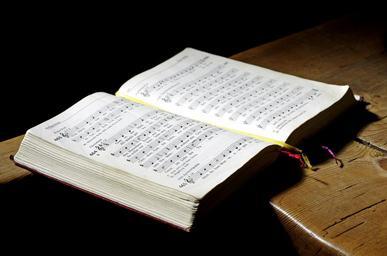Why Hymns and CCM are So Different
It is an understatement to say that different cultures value music differently. And while that statement may seem obvious on the surface, the church acts as if it cannot perceive the very different goals of hymns and worship anthems. Enter into any church service where both contemporary and hymn genres are present and you can easily find two groups of people, each misunderstanding the other. These misunderstandings persist, and will continue to persist, until everyone takes time to understand the very different goals of hymns and contemporary worship.
Martin Luther the Teacher
To appreciate the purpose of hymn texts, we have to go back to the beginning of the Protestant Reformation. For more than a thousand years the Roman Catholic Church had moved to take biblical literacy away from the people. The official Bible text was in Latin, and the only opportunity people had to worship together was the Latin, Roman Catholic Mass.
Though the Mass contained music of worship, not only was it sung in Latin, which most people did not speak, it was only sung by a choir. By the year 1000 AD. the congregation practically took no part in worship. As the result, the illiterate people had no Bible to read and no song to sing. Congregational song was completely dead.
Enter into this world the Augustinian monk, Martin Luther. As his accidental reformation took hold, (He initially wanted to address grievances with the church, not leave it.) Luther saw that reforming the hearts and minds of people required new congregational song. So he set to work composing new music for his congregation.
One of the primary requirements for Luther’s songs was that they teach his people theology. For too many centuries the church had sung empty praise. The Roman Mass was built around three movements, the “Gloria”, “Credo” and “Sanctus”. While they served as fine adoration texts, Luther knew his people needed more. The illiterate congregation, who had relied on scenes from stained glass windows for their biblical education, needed more substance. They needed to sing the Gospel.
Rewording Scripture
About the same time as Luther, John Calvin set to work in Geneva Switzerland to give his congregation something to sing. Different than Luther, Calvin didn’t write free verse himself, but relied on the pages of scripture. He adjusted the words of the Psalms so that they flowed in meter and were easy to sing. This helped his church to memorize the Word and message of scripture, even if in paraphrase. (Even Jesus read scripture in paraphrase. They’re referred to as the Aramaic Targums.)
Within thirty years of the publication of Calvin’s Genevan Psalter, it was translated and published in dozens of languages worldwide. This allowed metrical Psalmody to distribute God’s word in easy rhythm to people groups who had previously been only spectators.
One of the reworkings of Calvin’s Genevan Psalter, the Ainsworth Psalter, was the one brought to the new world by the Pilgrims in 1620. Once in the United States, Psalmody continued to grow in usage, both in congregational worship and in personal study. As more and more Psalters were printed, it was not uncommon to find individuals and congregations who had the whole book of Psalms committed to memory; all made possible by the easily singable, metrical Psalter.
Psalmody only began to wane in the US once more theologically subjective texts gained popularity. The role of song in worship changed from teaching and learning scripture, and adoring Christ, to musing on what I think about God and how he makes me feel. It is from this last category of song that modern worship music directly descended.
What Good is Contemporary Music?
So, do contemporary worship anthems have a place? Yes! If the church is to reach the world with Christ’ gospel message, it must do so while speaking their language. This means playing music that sounds familiar, using a dialect that they can understand. The best use for contemporary worship anthems is in evangelism.
And just because an anthem isn’t a paraphrased Psalm, or theology textbook doesn’t mean it does not have value as a song of adoration. When Luther began writing verses to teach his congregation, he didn’t completely abandon the musical form of the mass. Churches all over the world still sing variations of the “Gloria” and the “Sanctus” (Holy) today. Even the most modern churches like Elevation, Bethel, Hillsong, and Gateway, unknowingly lead and sing music every week that finds its origin in the Mass.
But there are many groups who have gone a step further and continue to write new hymns and lead old ones with modern instrumentation. Such groups are metering Psalms and arranging texts in homophonic style to make the memorization of scripture and theology simple; all the while being supported by the band.
The point to remember, is that the primary goal of hymnody is very different than that of contemporary worship anthems. The goal of a hymn is to teach the theology of scripture in a way that is easy to sing and easy to memorize. The aim of Luther, Calvin and all hymn writers is to give the believer the tools of scripture to aid them on their road of sanctification.
If you enjoyed this article, please subscribe!

